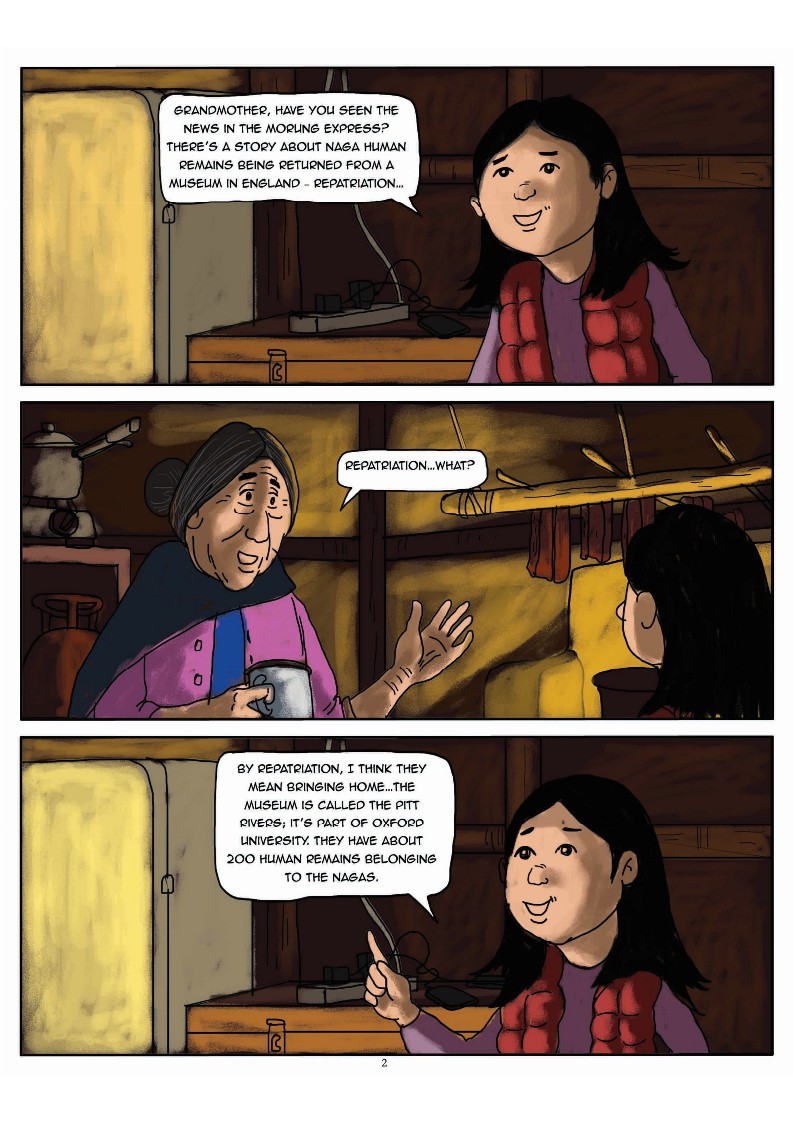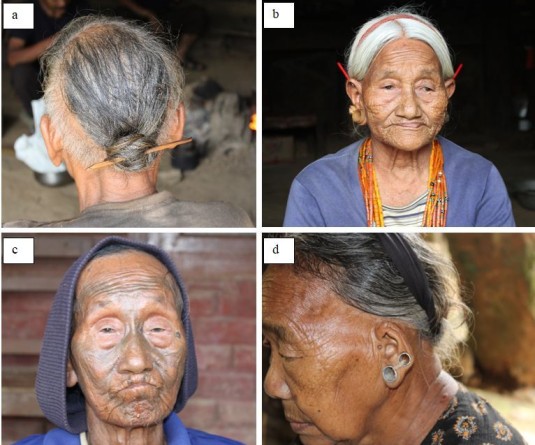An image extracted from ‘A Path Home’ a graphic novel on Naga Repatriation by Arkotong Longkumer and Meren Imchen. The novel was released on February 17, 2023. The book is published by Recover, Restore and Decolonise (RRaD) and the North Eastern Social Research.

Review by Ningreichon Tungshang
The novel is to help the Nagas understand what repatriation is and attempts to convince readers why we should be unafraid to bring home the remains of our ancestors and Naga objects that were taken from our land to foreign lands. Many of these human remains and objects are found in the Pitt Rivers Museum, England. The novel informs the reader the background, the process, and the conversation on Naga repatriation that started in the year 2000.
Two Naga researchers, Arkotong Longkumer and Dolly Kikon along with members of the Forum for Naga Reconciliation have formed a research group, Recover, Restore and Decolonize to sensitize and facilitate this process and conversations through public lectures, interviews, writings, and community events but the decision, discernment, and the ownership belongs to the Naga people.
Repatriation, the novel illustrates, is a part of decolonization for the Nagas who were enmeshed in the thick of colonial history and wars- the impact of which we are still disentangling with. There are similar stories and experiences of other Indigenous communities- the Maasai people in Kenya and Tanzania; the Evenki in far East Russia; Haida in Canada; Shuar in Ecuador; Maori in Aotearoa New Zealand whom the Pitt Rivers Museum have partnered to understand how to care and honour their artefacts, stories and histories.
In the context of the Nagas the novel is crafted around the conversations of three groups in different settings. We are taken through the complexities of this process and made to develop an understanding that the repatriation is intricately and delicately linked with the worldview and practices of the Naga people around birth, marriage and death.
It is interesting to note the characters are built around different Naga tribes discussing both possibilities and concerns of repatriation. The conversations bridges three generations as depicted by the grandmother, Ali (granddaughter) and Yonglang (father of Ali) who are sitting around the hearth. Their conversation rolls between Naga history and repatriation; pessimism and/or dismissive posture of the father and the conviction and hope of the daughter, Ali. The grandmother retells what she used to know and hear from her elders and brings to the fore the power of story-telling that has sustained the Nagas for generations.
The historical narrative, however, gets a bit clichéd and could have been shorter.
The novel looks at repatriation as a way of reconciliation for the Nagas and offers a fresh approach to peace and collective healing by restoring human dignity to the human remains irrespective of who they were. The novel however does not suggest how and what can be practically done and leaves it wanting for some concrete suggestions that can guide the people, even to initiate thinking and discussions among people for these ideas are new, and even strange. Even if the approach is going to be ‘community-led,’ it will help to have guideposts and a direction because it is already clear that there can be only two outcomes-to bring home or not to. The details of either will require time and reflection.
The conversation between Sirala, Tesho and Ayung held the key to this dialogue in Naga homes and churches and would have achieved the objective of the novel deeper had it addressed or even investigated how human remains are treated biblically.
There are few stories one can draw inspiration from, and among them the death and burial of Jacob and Joseph is significant in this context.
Jacob gave clear instructions how he was to be buried and where. He wanted him to be buried among his people, his family in the designated field where his ancestors were buried including his wife, Leah. The bible says that ‘Jacob’s sons carried him from Egypt to Canaan and buried him in the cave in the field of Machpelah, near Mamre, which Abraham had bought as a burial place’ (Genesis 50: 13)
His son Joseph too before he was to die made his brothers promise to carry his bones from the place he was to die and buried (Genesis 50:25) and more than 400 years later Moses took the bones of Joseph with him. (Exodus 13:19)
These stories are not just great testimonies. They are guideposts and direction.





